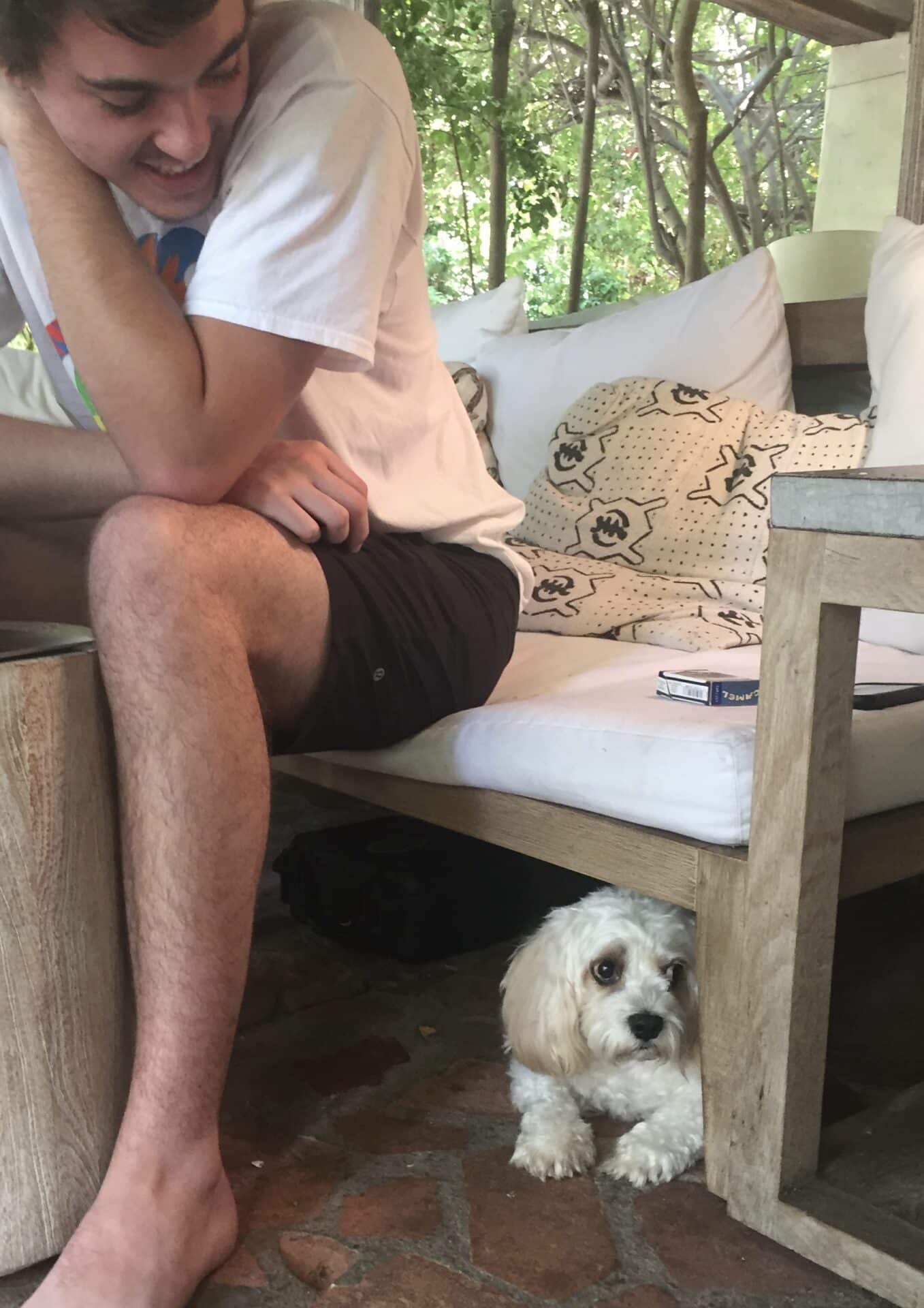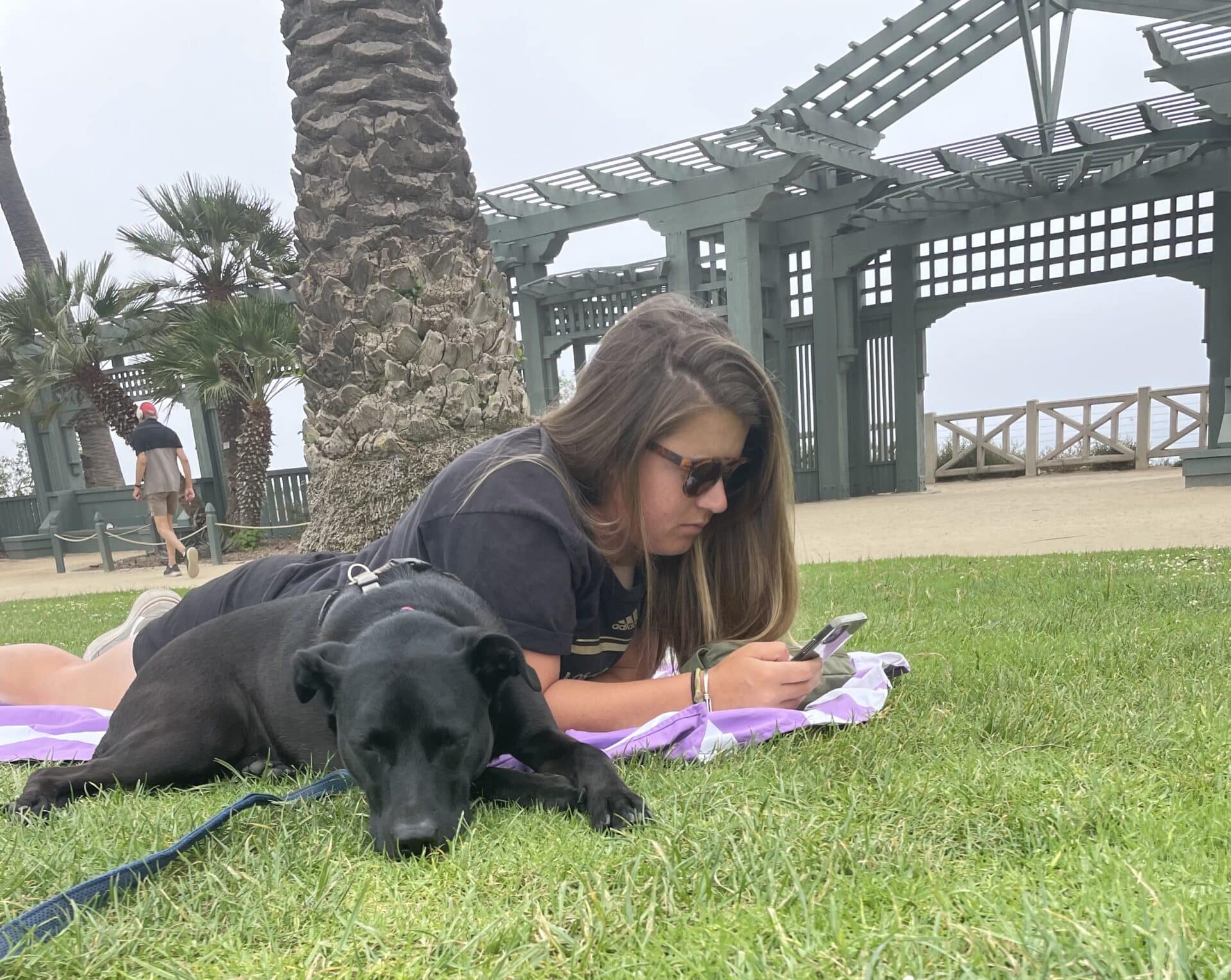Anxious, fearful, or reactive dogs don’t learn to view the world as a safe place through obedience or any other form of dog training.
First and foremost these dogs need understanding and patience, and they need to feel they’re being heard. They can achieve this and more with a guardian who focuses on meeting their dog’s canine needs, and communicates in a language dogs instinctively understand.
1. Create one or more sanctuaries at home for your pup
A dog sanctuary is a place where your dog feels safe and protected. By incorporating elements that soothe dogs naturally, we can reduce their overall anxiety, and provide them with a place customized to their needs whenever they’re feeling overwhelmed. *Create positive associations with this area before confining your dog there or leaving them alone for the first time.
*Avoid using the sanctuary for any form of discipline.
*Avoid leaving your dog in their sanctuary for longer than they’re comfortable with, while you’re home.

2. Place appropriately-sized nest beds in every room your pup spends time in.
Nest beds promote calm and encourage deeper, more restful sleep. Having their own ergonomic furniture to relax on is comforting to dogs, even if they regularly join you on the couch. Having the back of their neck, spine, and hips against a solid surface tells dogs they cannot be attacked from behind. This is an instinctual impulse that’s hardwired in dog DNA.
3. Place nest beds under tables or desks, next to walls, in corners, between sofas and solid objects, out of foot traffic, and away from windows.
Placing nest beds in protected spaces helps dogs feel secure and reduces distractions that might excite them. This increases the likelihood of deep, more restful sleep.

4. Play calming music (based on studies) near your dog’s sanctuaries, at a low volume.
Studies have demonstrated that the right music without ads or interruptions can significantly reduce stress behaviors (barking, jumping, destruction, self-mutilation, etc.) in animal shelters.
*Play calming music when family members or neighbors are coming and going, when deliveries happen, when you’re leaving your dog home alone, and whenever you want to encourage rest can make a visible difference in a fearful, anxious, or reactive dog’s behavior and attitude.
5. Provide enrichment (brain games) at least once a day, every day.
*Enrichment is an activity that replicates instinctual dog behaviors. These are behaviors dogs need in order for them to be mentally and emotionally satisfied.
*Variety is important! The same activity or puzzle used daily stops being enriching in as little as 1 week.
*I recommend having a minimum of 7 enrichment options on hand to avoid this. More, if you use enrichment daily (highly recommended!).
6. Schedule walks at off-peak times and/or in low traffic environments.
*When that’s not possible, consider a 1 month (or longer) vacation from walks.
*Dogs can get more out of a sniffari (decompression walk) than what most humans think of as a walk because sniffing works the dog brain and instincts far more than leashed walking does.
*Drain mental and physical energy with enrichment, play, cue (command) practice, even car rides, if your dog enjoys them.
7. Spend part of every walk sitting quietly together, observing the environment without talking, playing or petting.
This type of socialization helps normalize ambient sounds, movement, and activity, and desensitizes dogs to things that might otherwise startle them or trigger a reaction. Dogs learn to be calmer and have better control of their impulses in public settings, as a result.

8. Talk less to your dog, especially outside of your home. Communicate more with body language and hand signals.
Humans are predominantly verbal communicators. Dogs are predominantly physical communicators. When humans stop communicating exclusively with spoken language, dogs must look at us to understand what we’re doing or asking of them. This results in dogs paying more attention to us, organically.
When dogs make eye contact with us they’re paying attention. They truly “hear” us and we have an opportunity to more effectively influence their behavior.
9. Learn to understand what your dog is communicating.
Dogs are constantly expressing their needs and wants, but few humans pay attention because they don’t understand their meaning.
*How dogs move, the way they stand, where they focus their attention, movement of their ears, yawning, licking their nose, and so much more provide volumes of information for our understanding.
10. Reduce or eliminate processed food in your dog’s diet.
Preservatives, artificial flavors, and food dyes aren’t nutrition. They can negatively impact the gut biome, which impacts dog behavior, immunity to disease, and overall health. Stressed dogs especially benefit from the nutrition in whole, unprocessed food.
If you’re ready to help your puppy or dog deal with their “big feelings,” please drop me an email and tell me about your journey together.
Dee Green has been a professional puppy coach, dog trainer and canine behavior consultant for more than 20 years. She specializes in puppies up to 18 months, and fearful, anxious, and reactive dogs of all ages.
